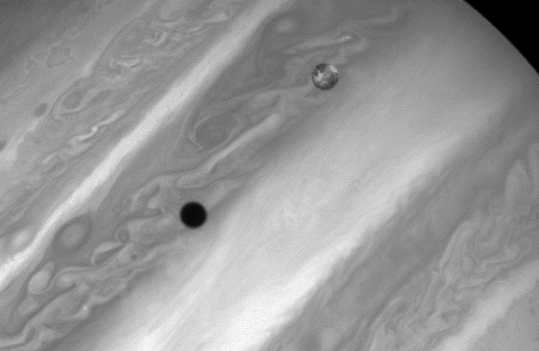Shadow of a moon and Kelvin-Helmholtz waves
 I saw this photo on Terra Que Gira a little earlier. Not only is it a striking photo...I just love that sharp, black circle against the more diffuse and swirly background of Jupiter's atmosphere...but it also shows some nice Kelvin-Helmholtz waves, which are trains of waves typically marking a boundary or interface between two layers or regions of different turbulent behavior (commonly due to different densities). They happen in all kinds of fluids....sometimes you may even see them in clouds on Earth.
I saw this photo on Terra Que Gira a little earlier. Not only is it a striking photo...I just love that sharp, black circle against the more diffuse and swirly background of Jupiter's atmosphere...but it also shows some nice Kelvin-Helmholtz waves, which are trains of waves typically marking a boundary or interface between two layers or regions of different turbulent behavior (commonly due to different densities). They happen in all kinds of fluids....sometimes you may even see them in clouds on Earth.
In a temporal sense, they commonly define the conspicuously organized transition from non-turbulent (laminar) flow to the much more random behavior of fully turbulent bursts and sweeps.
Check out this movie below of a simulation (click on it to go to movie, then go here for explanation)
Although they do occur in sedimentary features (bedforms), perfectly preserved examples of them are hard to come by.
Read more about the fluid mechanics of Kelvin-Helmholtz instabilities here, here, and here.

No comments:
Post a Comment